Enhance patient postoperative experience while
substantially reducing adverse events.
Almost all patients complain about drain sites. In a recent study, 65.5% of participants reported having skin irritation, including pain and discomfort, at the drain insertion site.
By maintaining proper placement and function of surgical drains, the K-LOCK™ promotes optimal healing and reduces the likelihood of seroma formation or infection.
K-LOCK™ minimizes irritation and discomfort for patients, significantly improving the patient’s surgical experience… and a happy patient leaves happy reviews and refers others for care.
Additionally, the 'Control Your Comfort™' feature allows patients to adjust the drain's position, avoiding sensitive areas and pressure points.
With the more dependable and comfortable drain securement - provided by K-LOCKTM, patients can move more freely and confidently, which can contribute to faster recovery times and better quality of life post-surgery. In the same study here, most patients complained significantly about how drains negatively impacted their ability to complete routine daily tasks, their quality of sleep, and even negatively impacted their mood.
The healthcare industry is continually advancing and embracing innovative technologies. Adopting new products, like the K-LOCK™, that improve patient outcomes and reduce patient discomfort can result in better reviews, rankings, and attracting more patients. In the study referenced previously, and viewable here, “Most patients (65%) expressed that they would prefer to receive care from institutions that utilize improved alternatives to standard drains.”
PL106-430 is cited as the “Needlestick Safety and Prevention Act.” The Act, an amendment to the OSHA Bloodborne Pathogen Standard, requires employers to use safer medical devices wherever and whenever feasible to reduce the risk of injury from sharps.
K-LOCK™ eliminates the need for sharps in surgical drain securement and aids hospitals in compliance with the Act.

Study shows need for K-LOCK™
A recent publication from an independent group at Harvard clearly demonstrates the significant ways that suture-secured drains impact patients directly, and thereby your hospital indirectly.
Specifically, the referenced study reports that:
K-LOCK™ is the breakthrough alternative that can solve the real and significant issues summarized above and save your healthcare system time and money while doing so.
Study supports the value of K-LOCK™
A randomized, prospective, internally controlled clinical study of 20 patients published in Plastic and Reconstructive Surgery – Global Open, compared K-LOCK™ to traditional suture-secured drains. K-LOCK significantly reduced drain securement time (P = 0.0008), had no securement failures, and showed indisputably higher patient satisfaction without increasing skin irritation or adverse outcomes. In short, K-LOCK offers a faster, safer, and more comfortable alternative to sutures for securing surgical drains, improving overall patient experience and drain management.
Shown are examples of irritated suture secured drain sites on actual patients. The safety and standardization of K-LOCK™ will eliminate these issues and enhance patient comfort, healing, and satisfaction.
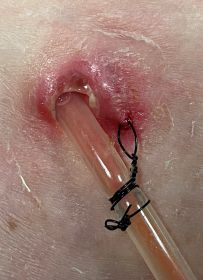


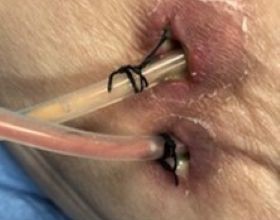
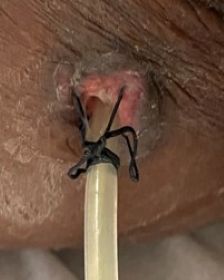
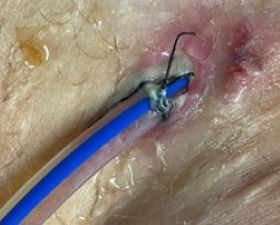
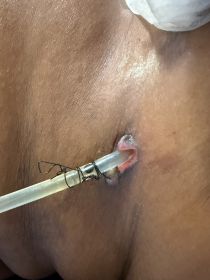
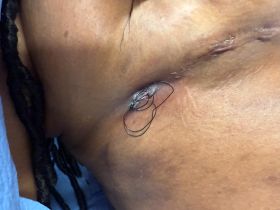
“I really loved the K-LOCK™ drain because it didn't bother me at all. No pulling, didn't get caught on clothing, underwear, pads, etc. I believe this is most definitely a better and easier option with minimal to zero pain or issues. I really enjoyed having a chance to experience the K-LOCK™. For me it is top of the line.”


“I had the K-LOCK™ on the right side and the regular drain tube on the left and the left side was always stinging and pulling, right side was tender around the outer edges of lock, but it didn’t hurt or sting. I would want both sides to be K-LOCK™ if I had to have drains ever again.”
“The K-LOCK™ device was a big hit with the patients. They were far happier with it than the traditional means of suture securement.” – RS, M.D.
“…I predict this will be the only way we secure drains in 5 years. It will make suture securement seems as outdated as ether is for anesthesia.” – PA, M.D.
“So simple! How come no one has thought of this before?” – ER, M.D.


“As healthcare providers, our responsibility is to offer the best possible care to our patients. Investing in a method that enhances patient outcomes and comfort aligns with our obligation to prioritize patient well-being and reinforces our commitment to excellence in patient care.”